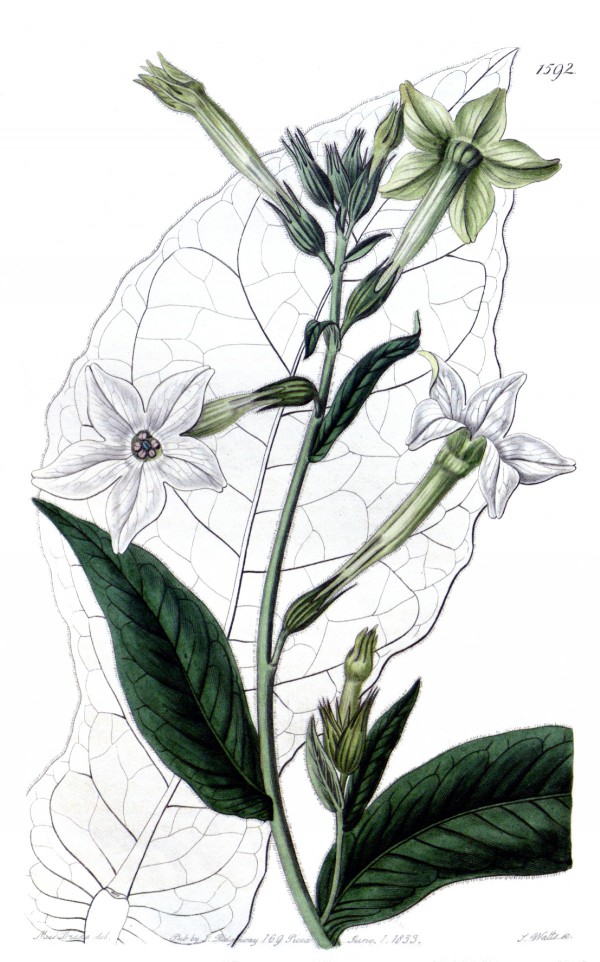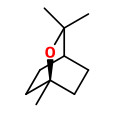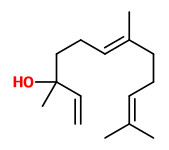Nicotiana alata Link & Otto - Solanaceae - winged tobacco, jasmine tobacco, sweet tobacco, Persian tobacco, Flügel-Tabak
Perennial herb, up to 60cm tall, native to South America, cultivated as ornamental.
„Has a lovely fragrance in the evening to night. Most varieties bloom late-afternoon to evening.“ https://en.wikipedia.org/wiki/Nicotiana_alata
„Nicotiana alata is tender perennial that is often grown as annual. This species of flowering tobacco is a somewhat spindly plant that typically grows 90-120cm (36-48 inch) tall and features nocturnally fragrant, long-tubed, yellowish-green to white flowers that open only at night. Spatulate basal leaves to 30cm (12 inch) long are attached by distinctive winged petioles. Upper stem leaves are much smaller and sessile. The branched flower stalks produces white flowers that release their intense fragrance when they open at night. It has bigger flowers than other tobaccos do, about 8cm (3 inch). Nicotiana alata is appreciated for its perfume. Bloom starts in in early summer and continues into fall in a protected spot.“
http://www.plantsrescue.com/nicotiana-alata/
Main components of the headspace of N.alata flowers were 1,8-cineole (50.8%), nerolidol (26.7%), limonene (18.9%), myrcene (10.9%), sabinene (9.0%), and α-thujene (7.6%). (E)-β-ocimene, (Z)-3-hexenyl acetate, calarene, (E)-β-farnesene, and methyl benzoate were present in traces.
[Loughrin, John H., et al. „Headspace compounds from flowers of Nicotiana tabacum and related species.“ Journal of Agricultural and Food Chemistry 38.2 (1990): 455-460]
„Four Nicotiana species in section Alatae sensu strictu have flowers that emit large amounts of 1,8 cineole, with smaller amounts of monoterpene hydrocarbons and α-terpineol on a nocturnal rhythm. This pattern suggests the activity of a single bio-synthetic enzyme (1,8-cineole synthase) with major and minor products; however, several terpene synthase enzymes could con-tribute to total monoterpene emissions… Flowers of N.alata emitted more than twice as much fragrance as any other species, particularly at night [~1000 ng per g dry mass flower per h], and related species in section Alatae also were strongly scented.“
Main compounds of the flower scent were 1,8-cineole, linalool, 3-methylbutyloxime, (E)-nerolidol, (E,E)-farnesal, α-terpineol, β-pinene, myrcene, sabinene, limonene, and 1-nitro-3-methylbutane. Minor components were e.g. α-pinene, ocimene, linalool oxides, nerol, geraniol, geranyl acetone, zingiberene, farnesene, farnesol, benzaldehyde, salicylaldehyde, eugenol, isoeugenol, methylsalicylate, amyl benzoate, amyl salicylate, prenyl salicylate, benzyl salicylate and (Z)-3-hexenyl acetate.
[Raguso, Robert A., et al. „Fragrance chemistry, nocturnal rhythms and pollination “syndromes” in Nicotiana.“ Phytochemistry 63.3 (2003): 265-284] https://www.amherst.edu/media/view/134628/original/nicotianaphytochem.pdf

Nicotiana alata Link & Otto [as Nicotiana persica Lindl. as Nicotiana persica Lindl.
Edwards’s Botanical Register, vol.19 t.1592 (1835) [S.A.Drake]
http://botanicalillustrations.org/species.php?id_species=700681&SID=0&size=0


